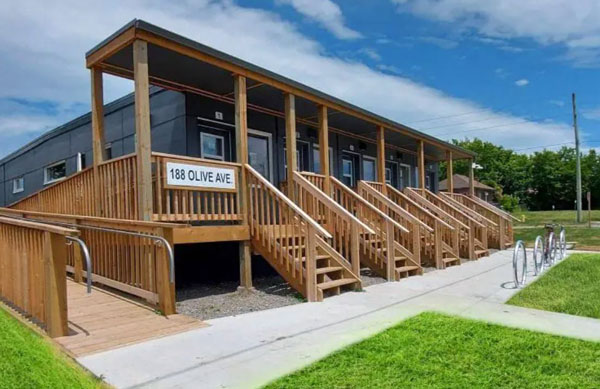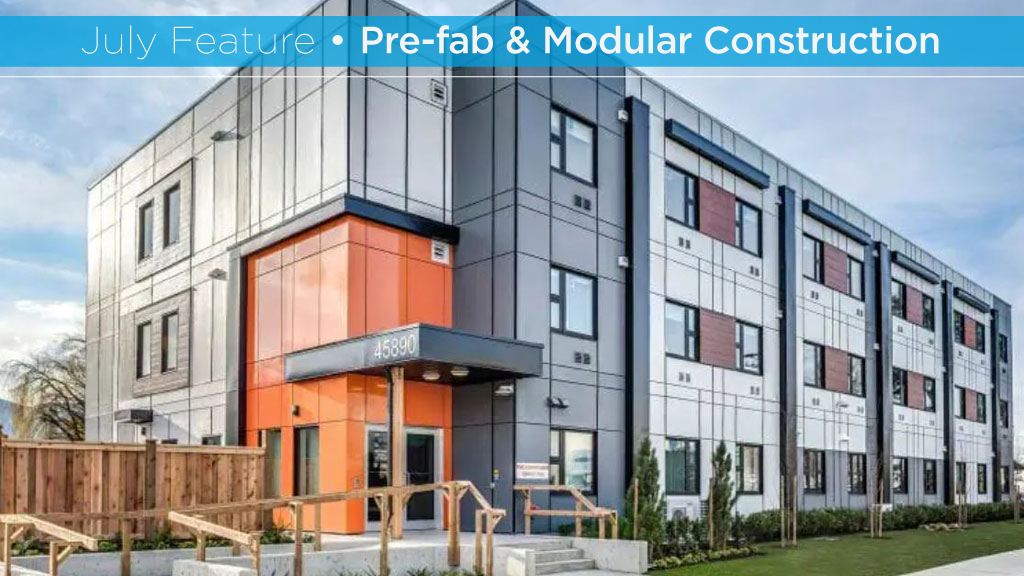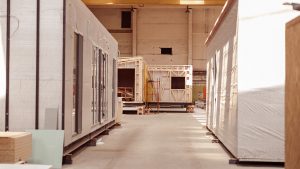After 20 years or more making slow gains, modular construction is on the verge of a major breakthrough.
As Tom Hardiman, executive director of the Modular Building Institute (MBI) notes, it’s been a long time coming but strong growth over the last five years suggests the concept is gaining traction.
MBI just held a conference in Toronto last June and Hardiman says the response has been strongly positive because there’s a perfect storm in play.
“We’ve seen market share for new modular construction double in the last five years, which is triple in the last seven years,” he says.
While growth “chugged” along at two per cent, it’s now hitting five per cent, he says, and is gaining attention as more government sponsored projects sign on and lead the way to a traditionally risk averse and conservative construction industry.
“There are several factors,” he says. “There was never any pressure to figure out a different way to build until the recent labour shortage and material supply problems, along with the increasing housing shortage crisis and the homeless issue.”
It started during COVID-19 when there was a sudden need for rapid deployment of housing modules or medical modules to provide safe isolation resources and to boost hospital capacity by moving patients.
MBI represents 60 companies based in Canada, including 26 manufacturers of modular structures. MBI estimates there are about 45 modular manufacturers in Canada fabricating for a variety of markets including the residential, multi-family, commercial, educational and industrial sectors. There are also an estimated 15 or so smaller fabrication warehouses doing renovations and modifications for various markets.

Kevin Read, director and CEO at Nomodic in Calgary, Alta. and chair of the MBI Canadian council, says north of the 49th parallel things are progressing similarly, especially in QSR and casual dining.
His company has been involved with a modular build for McDonald’s in Abbotsford, B.C., a Popeye’s Chicken, two Starbucks coffee houses and a Scotiabank.
“It started to change in 2018 when the governments started responding to the housing crisis,” he says. “Time being money, the delays of COVID and the labour and materials shortage started to play into the market.”
That in turn has driven interest and adaptation of modular on both sides of the border.
“The 51 per cent increase in building industry modular for our company has been unprecedented since 2021,” Read says. “It’s sometimes a difficult conversation with vendors because the risk doesn’t go away.”
Read has also worked with government, financial and certification bodies such as the Canadian Standards Association and Canada Mortgage and Housing Corporation to develop standards and protocols for modular in Canada.
Having government share the allocation of risk has changed things positively.
Similar to what is happening in the U.S., factory location has also been a key factor in Canada, says Read, with their facility in Winkler in southern Manitoba supplying projects in British Columbia.
“Depending on the jurisdiction, you can take a 14-by-60 or even 70-foot module by road,” he says. “We shipped by road from Winkler to Chilliwack.”
The factory concept has unlocked the potential of strangled capacity, Read says, but the entire exercise is always a ballet of moving parts from financing to design to materials through logistics from the factory to the site and final assembly.
“Some sites in cities are just too tight to work with a crane and large modules,” he says. “And we need contractors with experience moving modules off trucks with cranes and into place in a short time.”
Strong relationships are being formed by general contractors experienced with modular operation with a good network of trades critical to successful completion.
The biggest growth areas for the MBI membership, which doesn’t include large ICI builders, is in multi-unit housing, Read says.
The industry has done its part by assuaging those who might see modular as a risk compared to traditional onsite construction by creating template contracts, he adds.
“To finance modular we need 50 per cent up front,” he says.
That’s a shift from traditional project financing.
MBI’s recent offsite construction expo in Toronto showcased the offerings from manufacturers and contractors along with offsite factories, transportation companies, architects, engineers, BIM suppliers, materials suppliers and consultants of all types of offsite construction processes.
It wasn’t a big headline event, says Hardiman, but it did evangelize the sector’s messaging and he thinks the impact was positive as they work to raise awareness about the solutions modular offers.
“Whereas architects would look at modular and turn up their noses, they’re now coming on board,” he says.
Addressing the skilled labour shortage has also been critical, Hardiman says.
The factories tend to be in a stable location, he says, so the trades don’t have to travel far to get to sites, unless they’re assembling modules.
“If you can move the construction out of the city you save a lot,” he says. “And the trades like to be able to get home for dinner.”
Land costs for the factory are lower to start with and local tradespeople are happy to sign on for local work, he says.
Modular work doesn’t always pay the same as onsite work but it offers an entry way for women and minorities who otherwise would not have access to higher paying jobs.
It also lowers the cost of living for those workers who don’t have to relocate to cities where housing costs are higher.
With multi-storey residential leading growth, the trend is toward more levels from four or five storeys, with some even seven to 10 storeys high.
The trend towards taller has been going on for some time. New York City capped the world’s tallest modular building, a 32-storey affordable housing project in 2016, with prefabbed apartments stacked like Lego bricks which rented for half the going rate at the time.





Offsite construction is the future of construction but progress is very slow. Expanding of offsite construction need technology transfer to developing countries.